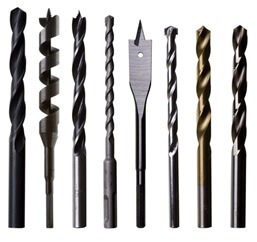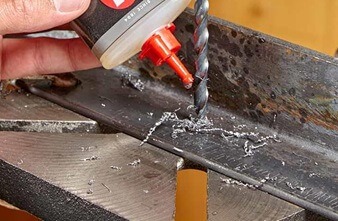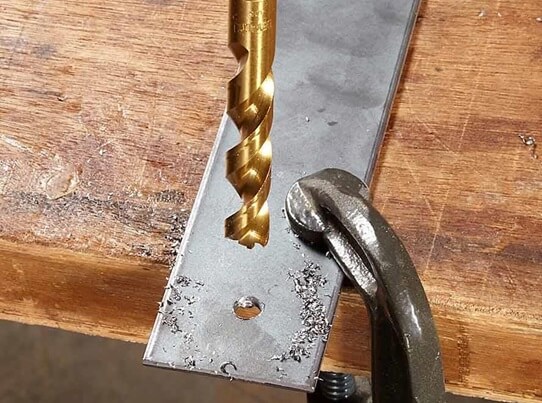How To Drill Into Harder Materials
At some point in time, every keen DIY enthusiast will have tried to drill a hole in a hard material that stubbornly resists their efforts. Curtain poles and concrete lintels come to mind!
However, with the right tools and approach, most materials will succumb. As with most practical jobs, it’s just a case of using the right tools in the right manner. Here’s what to do.
Select the correct drill bit
This is probably the most important piece of advice. When drilling into hard materials, normal drill bits will not cut it. For drilling into hardened steel, we suggest using a cobalt drill. For concrete, use a masonry drill with a tungsten carbide tip, ideally an SDS drill. A normal drill with the correct masonry bit will drill a hole in a concrete block without too much trouble but for repeated drilling into old concrete an SDS drill is better.
| DRILL BITS |
 |
Don’t rush it
It is much better to drill hard metals with the drill on a slow speed setting. This avoids putting too much pressure on the drill bit and lets the bit do the work. Pressing too hard or increasing the drilling speed will generate more heat. This in turn can actually harden the material that you are drilling into, making it the job more difficult than it needs to be. Increased heat will also reduce the life of the drill bit.
With small twist bits up to 5mm a drill speed of 3,000 rpm should be sufficient for drilling into metals. For large twist bits over 16mm, 350 to 1,000 rpm is recommended.
Lubricate
If you are drilling into steel that is 3mm or thicker you should ideally use a cutting lubricant. This reduces friction and hence the build up of heat. This makes the drill bit more efficient and reduces wear on the bit. Our cutting & tapping fluid spray Tygris R214 or our Tapcut Cutting Compound 5647tc will both assist greatly in this respect.
| LUBRICATE |
 |
Start small
If you need to drill a large hole, start with a small one and then progressively step up the size until you get the hole size that you want. When drilling into hard metals we suggest starting with a 6mm drill bit.
To give yourself the best possible start, make a small dimple in the metal with a punch. This will stop the drill from wandering across the metal initially.
| SMALL DRILL HOLE TO START |
 |
Use a clamp and eye protection
When drilling into any metal that is not fixed it should always be clamped firmly in place – never try to hold it yourself. The drill bit can easily catch in the metal and if it is not clamped this will definitely cause damage and harm.
It only needs a very small piece of metal to cause a serious eye injury, so it goes without saying that you should always take the greatest care to fully protect your eyes. For the best protection, choose safety glasses that wrap around the sides of your face. Don’t take any risks.
| USING A CLAMP |
 |
If you need any further advice about drilling please do not hesitate to contact us. Good luck with your project!



